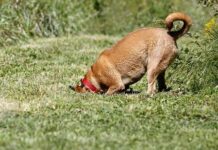Essential Tips to Keep Your Dog Safe and Secure in the Backyard
Every year, many dogs end up lost, injured, or worse, after escaping from their backyards. In some unfortunate cases, these pets are euthanized after being unclaimed in overcrowded shelters. However, there are numerous proactive steps pet owners can take to keep their furry friends safe and prevent these tragic outcomes.
Why Proper Identification Matters
Before diving into backyard security measures, it’s crucial to ensure your dog is equipped with a properly fitted collar that contains up-to-date identification tags. Additionally, microchipping your pet can significantly increase the chances of a safe return if they wander off.
Seven Effective Strategies to Secure Your Yard
1. Install Padlocks on Gates
A key cause of dogs escaping is family members inadvertently leaving gates unsecured. To prevent this, consider padlocking your fence gate. This simple measure can also keep pets safe during visits from service technicians like meter readers or landscapers.
2. Upgrade or Repair Fencing
Assess the security of your current fencing. Options like block walls, chain link, or wooden fences can enhance your yard’s safety. Ensure the fence is tall enough to prevent jumping and inspect it regularly for any necessary repairs to keep it in optimal condition.
3. Manage Visibility Around the Perimeter
Dogs can become anxious from sights and sounds beyond their fence. Depending on your dog’s temperament, consider installing portholes in wooden or block fences for visibility or adding privacy enhancements to reduce distractions. A solid barrier may alleviate anxiety for dogs sensitive to outside activity.
4. Utilize Coyote Rollers
If your dog has a knack for jumping fences, a coyote roller could be the solution. These devices prevent dogs from gaining footing at the top of the fence, encouraging them to roll back instead of over. They can be purchased as kits or constructed from readily available materials like PVC pipe.
5. Consider Invisible Fencing
Invisible fencing provides a unique solution for dogs who manage to escape. This system can act as a second line of defense, delivering a mild electric shock to encourage your dog to remain within the designated area. However, it is crucial to carefully follow training guidelines to avoid creating fear during their return.
6. Install Footers Beneath the Fence
If your dog digs to escape, consider adding footers to your fence. These can be implemented during installation through concrete or by burying materials like cinder blocks or chicken wire beneath the fence line to deter digging.
7. Create a Secure Kennel or Dog Run
If all else fails, a covered kennel or dog run may be your best option. Choose heavy gauge chain link material for durability, and ensure there is adequate shade to keep your pet comfortable while contained.
The Importance of Training
Alongside these physical barriers, training your dog to respect boundaries and come when called is essential. If your dog continues to escape despite your best efforts, consulting with a professional trainer or behaviorist can provide tailored solutions.
Implementing these strategies will greatly reduce the risk of your pet escaping and ensure their safety while enjoying the outdoors.












